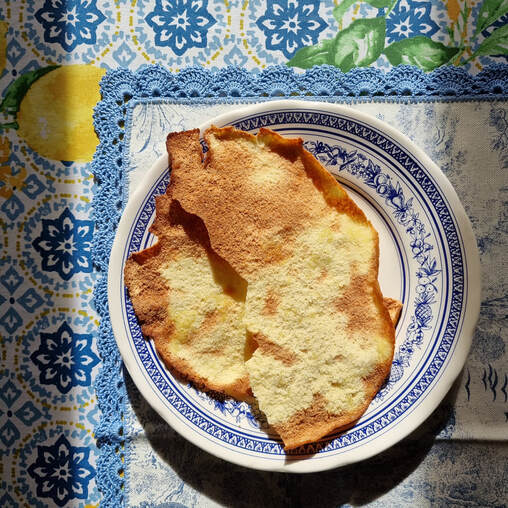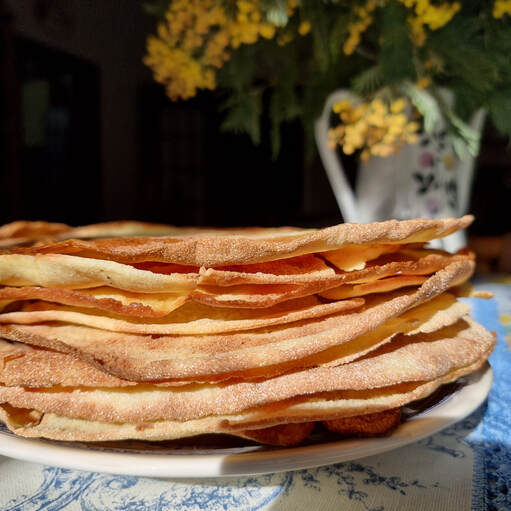|
Welcome back to our Sardinian food series. Today we’re talking about "carta da musica", better known as "pane carasau" in the Sardinian language. Pane carasau actually has nothing to do with music, it literally means “toasted bread” as it is cooked twice, but we like to call it music bread because of the unique crackly noise it makes when it’s broken or eaten. When the bread is put back into the oven for the second time, a large part of the water is eliminated and no crumb is formed, creating a dry and crunchy product. This process gives it a unique, light, crunchiness while the semolina flour used in the recipe makes the bread nuttier and sweeter. This makes pane carasau very addictive and easy to eat, especially when drizzled with olive oil. This ancient bread is deeply connected to Sardinian traditions of shepherding. Because it lasts a long time, the shepherd’s wives would prepare it for their husbands to eat while working long days in the fields. Thanks to its wide round shape and crispy consistency, they used it - literally - as a dish, gradually eating it together with the other ingredients, especially cured meat and cheeses. The love and care to make this bread was enormous and it’s one of the oldest types of bread in the world. Even today you’ll find pane carasau on the table at almost every meal and it’s definitely one of our favourites foods. Makes: 8 discs of pane carasau
Ingredients
Method
1 Comment
Jo
10/5/2024 02:45:55 am
What a lovely traditional recipe! Seems every one is making their version, or a “ healthy” version. This is excellent and from what I have researched, the most traditional recipe!
Reply
Leave a Reply. |

